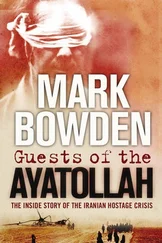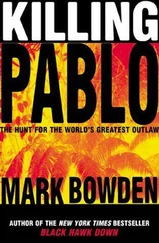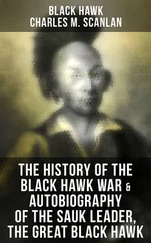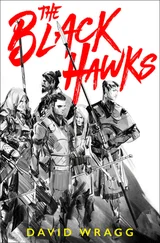Mark Bowden - Black Hawk Down
Здесь есть возможность читать онлайн «Mark Bowden - Black Hawk Down» весь текст электронной книги совершенно бесплатно (целиком полную версию без сокращений). В некоторых случаях можно слушать аудио, скачать через торрент в формате fb2 и присутствует краткое содержание. Город: New York, Год выпуска: 1999, ISBN: 1999, Издательство: Atlantic Monthly Press, Жанр: nonf_military, на английском языке. Описание произведения, (предисловие) а так же отзывы посетителей доступны на портале библиотеки ЛибКат.
- Название:Black Hawk Down
- Автор:
- Издательство:Atlantic Monthly Press
- Жанр:
- Год:1999
- Город:New York
- ISBN:978-0871137388
- Рейтинг книги:3 / 5. Голосов: 1
-
Избранное:Добавить в избранное
- Отзывы:
-
Ваша оценка:
- 60
- 1
- 2
- 3
- 4
- 5
Black Hawk Down: краткое содержание, описание и аннотация
Предлагаем к чтению аннотацию, описание, краткое содержание или предисловие (зависит от того, что написал сам автор книги «Black Hawk Down»). Если вы не нашли необходимую информацию о книге — напишите в комментариях, мы постараемся отыскать её.
Black Hawk Down — читать онлайн бесплатно полную книгу (весь текст) целиком
Ниже представлен текст книги, разбитый по страницам. Система сохранения места последней прочитанной страницы, позволяет с удобством читать онлайн бесплатно книгу «Black Hawk Down», без необходимости каждый раз заново искать на чём Вы остановились. Поставьте закладку, и сможете в любой момент перейти на страницу, на которой закончили чтение.
Интервал:
Закладка:
“Forty-one, come on out. Come out now.”
With intensifying fire, there was a real risk that the Little Bird would be damaged and get stranded on the ground. Smith and Busch needed doctors. The pilots would have to leave the rest of the Super 61 crew and hope the Rangers could hold on until more help arrived.
Jones grabbed the stick and told Maier, “I have it.”
Jones told the command network: “Forty-one is coming out.”
CHAPTER 7
Another Grenade, Another Chopper Hit
November 22, 1997
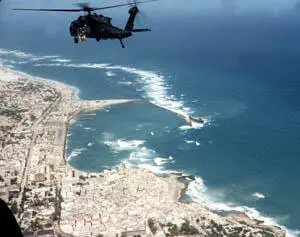
PILOT MIKE GOFFENA was moving his Blackhawk up behind Mike Durant’s bird when the grenade hit. The two helicopters were supposed to be opposite each other in orbit over the target area in Mogadishu, but Durant’s Super 64 hadn’t been in the formation long enough to get in sync. Durant was still struggling to take the spot vacated by Cliff Wolcott’s Super 61, which lay smoldering on the ground after being shot down minutes earlier.
Goffena, flying Super 62, was closing in fast from behind when he saw the hit to Durant’s gearbox. The grenade blew off a chunk of it. Goffena saw all the oil dump out of the rotor in a fine mist, but the bird stayed intact, and everything seemed to still be functioning.
“Sixty-four, are you OK?” Goffena radioed to Durant.
The Blackhawk is a big aircraft. Durant’s chopper weighed 16,000 pounds with crew and gear, and the tail rotor was a long way from where he sat. Goffena’s radio call came before Durant had even sorted out what had happened. He heard Goffena explain that he had been hit by an RPG fired by Somalis, and that there was damage to the tail area.
“Roger,” Durant radioed back, coolly.
He didn’t feel anything unusual about the Blackhawk at first. He did a quick check of his instruments and saw that all the readings were OK. His crew in back, Staff Sgt. Bill Cleveland and Sgt. Tommy Field, were unhurt. So after the initial shock, he felt relief. Everything was fine. Goffena told him he had lost his oil and part of the gearbox on the tail rotor, but the sturdy Blackhawk was built to run without oil for a time if necessary, and it was still holding steady.
Durant had faith in the aircraft, but it had absorbed a strong impact. The air mission commander, Lt. Col. Tom Matthews, who had seen the hit from the command-and-control helicopter circling above, told him to put the bird on the ground. Super 64 was out of the fight.
Durant pulled out of his left-turning orbit and pointed back to the Americans’ airfield, about a four-minute flight southeast. He could see it off in the distance against the coastline. He noted, just to be safe, that there was a big green open area between him and the airfield, so if he had to land sooner, he had a place to put his helicopter. But the bird was flying fine.
Durant was the calm, collected type—a true pro. He had been with the secretive 160th SOAR (Special Operations Aviation Regiment), the Night Stalkers, long enough to be a veteran of dangerous, low-flying, night missions in the Persian Gulf war and the invasion of Panama.
He had learned to conduct himself with such discipline that many of his neighbors in Tennessee, near the Night Stalkers’ base in Fort Campbell, Ky., didn’t even know what he did for a living. His own family often didn’t know where he was. In fact, he’d been given just two hours’ notice of his assignment to Somalia. There had been just enough time to drive home and spend 15 minutes with his wife, Lorrie, and his baby son, Joey, and to explain that he would have to miss the child’s first birthday three days later.
Sometimes it seemed that all he did was fly missions, or train for them. Practice defined the lives of the Night Stalker pilots. They practiced everything, even crashing. Their moves in the electronic maze of their cockpits were so well-rehearsed they had become instinctive.
Now Durant steered his crippled Blackhawk southeast over Mogadishu, toward the Indian Ocean and the base. His friend Goffena made a quick decision to follow him. Goffena’s Super 62 had been providing cover for the target building and the crash site, where the Super 61 Blackhawk piloted by Cliff Wolcott had gone down from an RPG hit. Goffena had seen a rescue team rope in at Wolcott’s downed bird, and the forces around the target building were getting ready to leave. Prioritizing quickly, he decided he would see his four friends in Durant’s crippled bird at least part of the way safely home.
Goffena followed Super 64 for maybe a mile, to a point where he felt confident it would make it back. He was preparing to turn around when Durant’s tail rotor, the whole assembly—the gearbox and two or three feet of the vertical fin assembly—just turned into a blur and evaporated.
Inside Super 64, Durant and his copilot, Ray Frank, felt the airframe begin to vibrate rapidly. They heard the accelerating, high-speed whine of the dry gear shaft in its death throes. Then came a very loud bang. With the top half of the tail fin gone, a big weight was suddenly dropped off the airframe’s back end, and its center of gravity pitched forward.
As the nose lunged down, the big bird began to spin. After a decade of flying, Durant’s reactions were instinctive. To make the airframe swing left meant pushing gently on the left pedal. He now noticed he had already jammed his left pedal all the way to the floor and his craft was still spinning rapidly to the right. The rotation of the big rotor blades wanted to make the airframe spin that way, and without a tail rotor there was no force to stop it.
The spin was faster than Durant ever imagined it could be. Details of earth and sky blurred, the way patterns do on a spinning top. Out the windshield he saw only blue sky and brown earth.
They were about 75 feet above ground when Goffena saw the Blackhawk spin 10 or 15 times in the seconds before it hit. It all happened too fast. Durant was trying to do something with the flight controls. Frank, in the seat next to him, somehow had the presence of mind to do exactly the right thing.
In crash simulators, pilots are taught to eliminate torque by shutting off the engines. But the controls for the engines were on the roof of the cockpit, so Frank had to fight the spin’s strong centrifugal force to raise his arms. In those frantic seconds he managed to flip one engine switch to idle and turn the other halfway off.
Durant shouted into his radio: “Going in hard! Going down!”
He screamed his copilot’s name: “Raaaay!”
Goffena was amazed to see the plummeting helicopter’s spin rate suddenly slow. And just before impact, the nose of the bird came up. Whether for some aerodynamic reason or something Durant or Frank did inside the cockpit, the falling chopper leveled off.
With the spin rate down to half what it had been, and with the craft fairly level, the Blackhawk made a hard but flat landing.
Coming down flat was critical. It meant there was a chance the four men inside Super 64 were alive.
CHAPTER 8
A Second Crash, And No Escape
November 23, 1997
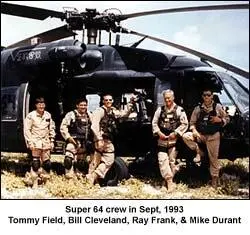
CIRCLING IN HIS HELICOPTER over Mike Durant’s downed Blackhawk, pilot Mike Goffena saw that Durant had been lucky. His helicopter had crashed not into one of the many stone buildings in central Mogadishu, but into a warren of flimsy tin huts.
Читать дальшеИнтервал:
Закладка:
Похожие книги на «Black Hawk Down»
Представляем Вашему вниманию похожие книги на «Black Hawk Down» списком для выбора. Мы отобрали схожую по названию и смыслу литературу в надежде предоставить читателям больше вариантов отыскать новые, интересные, ещё непрочитанные произведения.
Обсуждение, отзывы о книге «Black Hawk Down» и просто собственные мнения читателей. Оставьте ваши комментарии, напишите, что Вы думаете о произведении, его смысле или главных героях. Укажите что конкретно понравилось, а что нет, и почему Вы так считаете.






